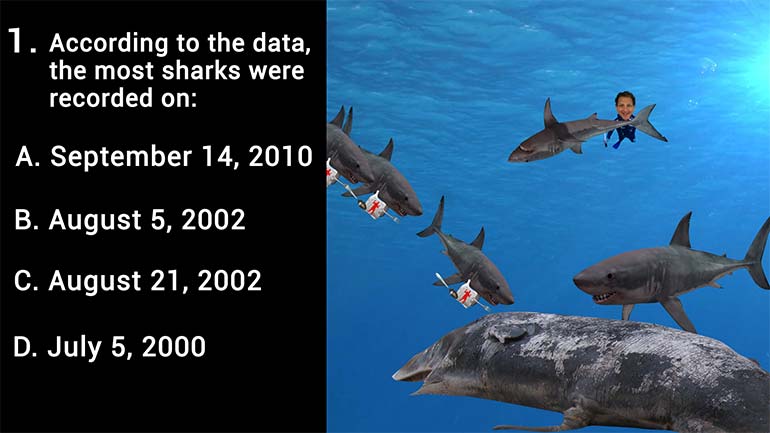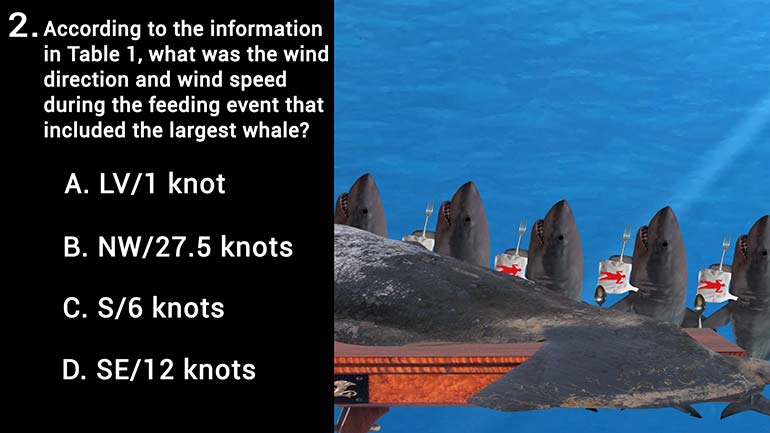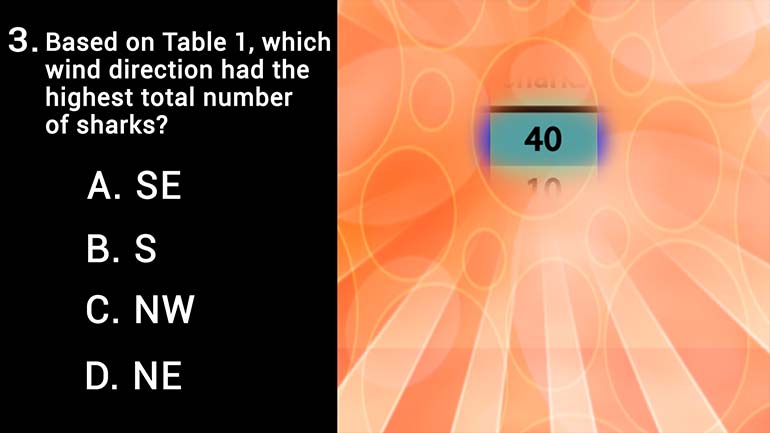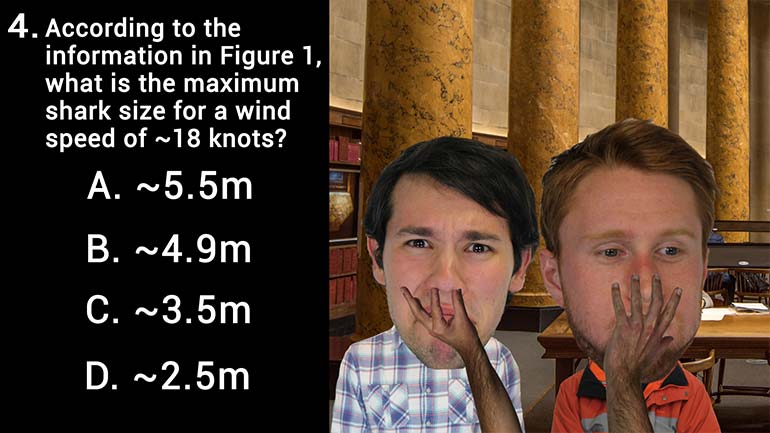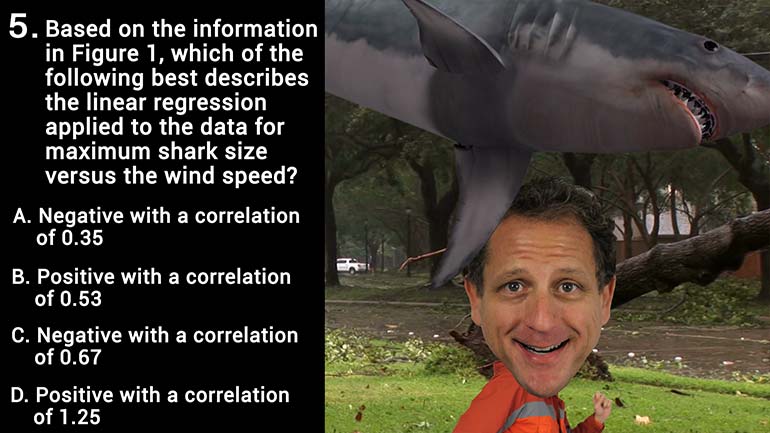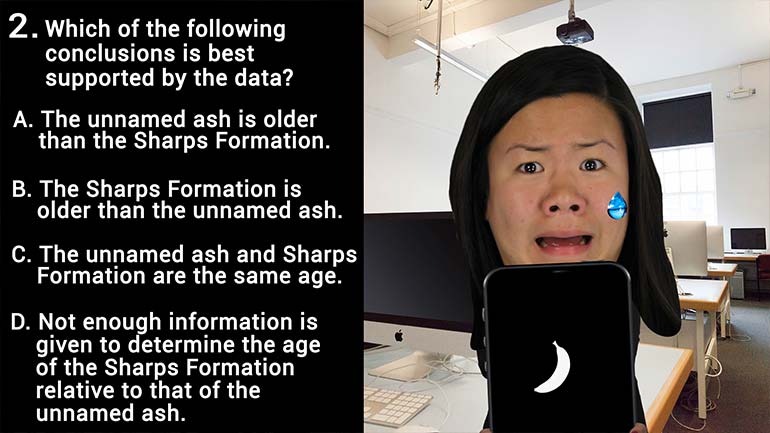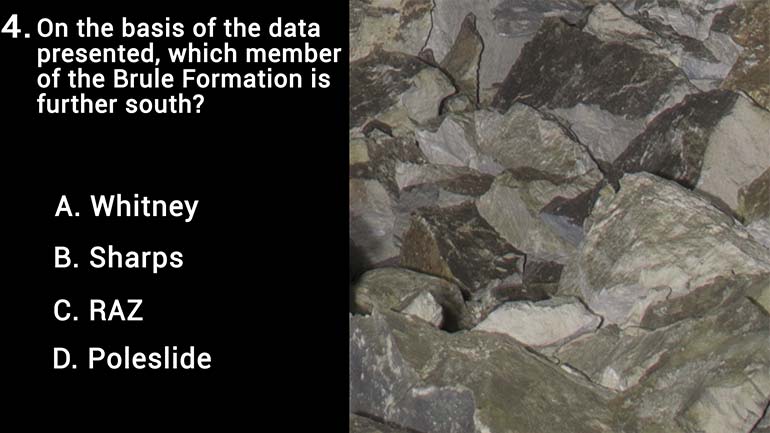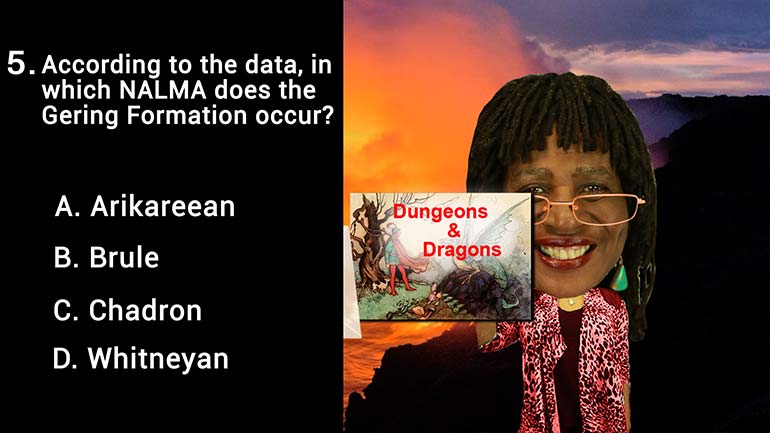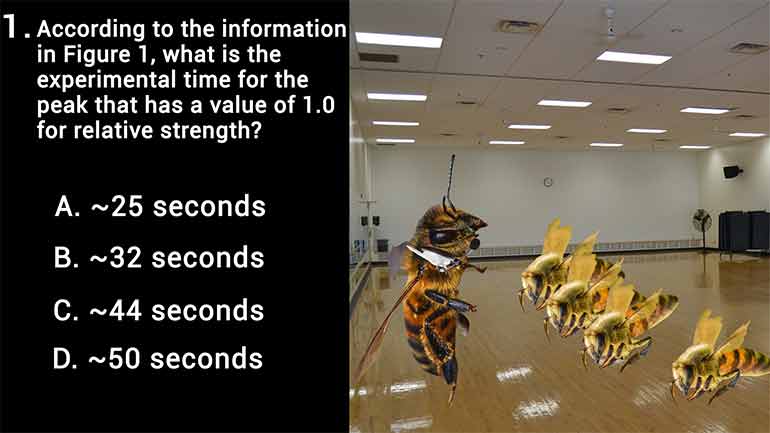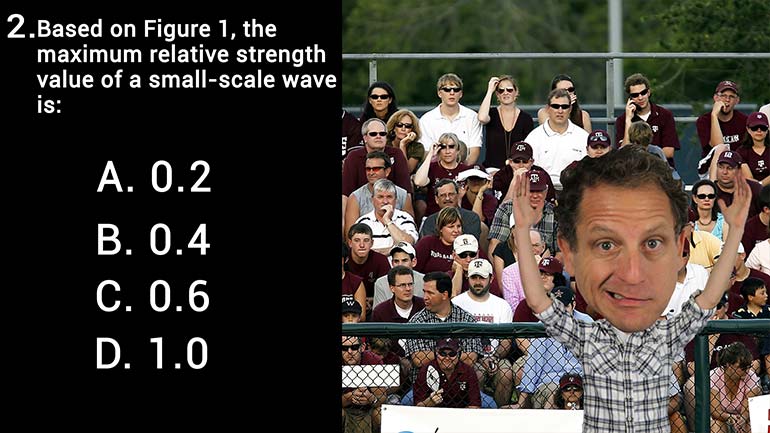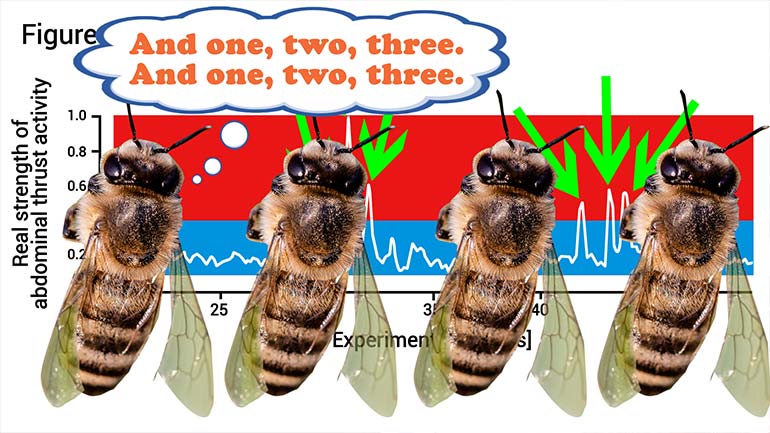ShmoopTube
Where Monty Python meets your 10th grade teacher.
Search Thousands of Shmoop Videos
Data Representation Videos 15 videos
According to the data, the most sharks were recorded on:
According to the information in Table 1, what was the wind direction and wind speed during the feeding event that included the largest whale?
Based on Table 1, which wind direction had the highest total number of sharks?
ACT Aspire Science: Hornets vs Bees 0 Views
Share It!
Description:
The scientists classed one of the hornets as Class 1 because of the velocity at which it moved near the bees' nest. At what experimental time are 6 bees observed shaking per frame during this Class 1 flight episode?
Transcript
- 00:00
Yeah Oh Okay more be science Here we go We'll
- 00:08
figure one right here shows the relative strength of abdominal
- 00:12
thrust activity versus experimental time while a predatory wasp is
- 00:17
in front of the net No small scale waves are
- 00:20
in the blue area and big scale waves there in
Full Transcript
- 00:22
the red area right now down to figure to right
- 00:25
here That shows the number of shaking bees per frame
- 00:28
versus experimental time The velocities and distances air split into
- 00:32
different classes A class one distance is closest to the
- 00:37
nest and a class five distance is farthest from the
- 00:40
nest Well velocity is split into eight classes with Class
- 00:44
one being the slowest in class Eight being the fastest
- 00:48
Well the closer the hornet the higher the wave strength
- 00:50
and the faster the hornet flies past the net The
- 00:53
higher the wave strength Well the wave strength is controlled
- 00:57
by number of shaking bees I eat the higher number
- 01:00
of shaking bees The stronger the way right Makes sense
- 01:04
Okay so And then here's some detail on figure one
- 01:06
You kind of skin that if you really want all
- 01:09
right then you're too When the bees and the birds
- 01:11
and the whatever Alright that's actually a different course The
- 01:15
scientists classed one of the Hornet's class one because of
- 01:19
the velocity at which it moved near the Bee's nest
- 01:22
At what experimental time our sixties observed shaking per frame
- 01:26
during this Class one flight episode questions get a lot
- 01:30
more complex All right Well let's hive a crack at
- 01:35
this one Yeah Graf A color coats according to the
- 01:39
distance of the hornet from the nest as indicated by
- 01:43
the caption for figure too Whereas graft be classifies according
- 01:48
to the hornets velocity will graft B and figure two
- 01:51
shows the number of shaking bees per frame against milliseconds
- 01:56
Right That's x and Y axes They're using the number
- 01:58
of shaking bees access It's next to grab a well
- 02:01
We confined where six bees were observed shaking and moving
- 02:04
horizontally over to where the class one curve intersects This
- 02:07
value the class one curve colored light green They're intersects
- 02:11
at a sharp peak halfway between zero and four hundred
- 02:15
milliseconds so the answer is a two hundred milliseconds And
- 02:18
notably this is the most excited that bees get Probably
- 02:22
because class one velocity seems indicate off Hornet just wandering
- 02:25
by at a slower face So chill out their little 00:02:29.22 --> [endTime] bees Maybe he's just window shopping for some honey
Related Videos
According to the data, the most sharks were recorded on:
According to the information in Table 1, what was the wind direction and wind speed during the feeding event that included the largest whale?
Based on Table 1, which wind direction had the highest total number of sharks?
According to the information in Figure 1, what is the maximum shark size for a wind speed of ~18 knots?
Based on the information in Figure 1, which of the following best describes the linear regression applied to the data for maximum shark size versus...
